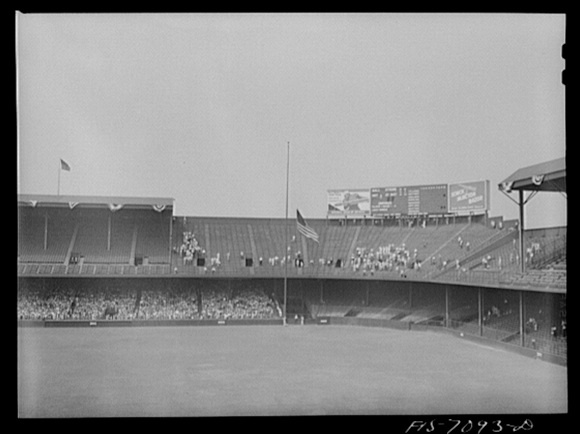
The debate over the future of the old Tiger Stadium site rages on, as Detroit officials covet a $4 million federal grant controlled by ballpark advocates while others question whether the ballpark site is worth preserving.
Detroit, of course, has been in the news in past weeks after a state-appointed manager ordered the city into Chapter 9 bankruptcy, resulting in a slew of lawsuits and debates over the future of the city’s finances, pension plans and public spending. Those debates are best carried out elsewhere, but it seems to us the future — and the past — of Detroit can be fairly encapsulated in the debate over the future of Tiger Stadium.
The debate really concerns recapturing Detroit’s great past versus laying the groundwork for a new Detroit. At its best, Detroit was an industrial center build around a single industry: automaking. Virtually every other major industry in town — machining, parts assembly — was based on servicing the auto industry. And as the auto industry receded, so did Detroit’s economy. Add white flight to the suburbs and a series of ineffectual city governments led by the likes of Coleman Young and Kwame Kilpatrick, and you had the making of a total meltdown.
Indeed, it was the corrupt administration led by Kwame Kilpatrick that led to the demise of Tiger Stadium after the opening of Comerica Park. That Tiger Stadium was one of America’s great sporting venues was undeniable; it opened the same day as Fenway Park and was still in fairly good shape when the Tigers departed. In addition, the late Ernie Harwell and Old Tiger Stadium Conservancy put forward a plan that would have saved the original Navin Field grandstand, kept baseball at the site and still released enough land for a profitable development. That plan died after city officials rejected the plan.
Of course, there’s not universal acceptance in Detroit that baseball needs to be a central part of the site. Shawn Windsor probably sums up the feelings of many in the Corktown neighborhood who want to see some sort of action at the corner of Michigan and Trumbull:
Sure, I enjoyed Tiger Stadium as much as the next person. But the Corner wasn’t the site of a massacre, a battle or a pivotal moment in our region’s history. It was the place where we escaped our routine to watch a game. To imbue the grounds with anything more is a disservice to memorials that honor actual sacrifice and hardship.
It’s also a disservice to those who now live and work around the neighborhood, one of the few in the city that is percolating. These folks deserve someone who will fight for improving the tax base. Major-league sized fields offering gauzy memories won’t accomplish that.
What’s most troublesome in this picture: the total lack of vision shown by city officials and the total disconnect in looking to other cities for inspiration. Right now city officials are pitching a redevelopment deal that would add a minimal amount to the tax rolls, and they want to finance it with federal funds controlled by the Old Tiger Stadium Conservancy. They’ve already blown on chance for a unique redevelopment: it should have been possible to save the original Navin Field grandstand and surround it with development similar to how Indianapolis imaginatively saved Bush Stadium. It’s been generally argued that there’s no secondary use for an old ballpark, but Indianapolis showed that profits can be made from a development of an old facility — provided there are vision and imagination in place. In Detroit, neither seems to be present.
Photo of Briggs Stadium, 1942, courtesy of Library of Congress. The photo shows the flag being raised; the flag pole was in play.
RELATED STORIES: Detroit officials: let’s compromise on Tiger Stadium redevelopment; MLB pitches youth academy for Tiger Stadium site; Keeping baseball alive at Tiger Stadium; Newest development plan for Tiger Stadium site: Urban Café Detroit; Tiger Stadium sign lives on; Despite bureaucratic indifference, Tiger Stadium lives on; New Tiger Stadium plan emerging: parades and baseball; “Business is better now than when Tiger Stadium was around”
—-
Share your news with the baseball community. Send it to us at editors@augustpublications.com.
Are you a subscriber to the weekly Ballpark Digest newsletter? You can sign up for a free subscription at the Newsletter Signup Page.
Join Ballpark Digest on Facebook and on Twitter!
Follow Ballpark Digest on Google + and add us to your circles!
